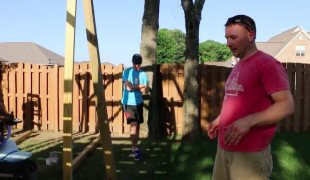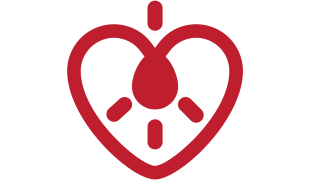- 7142
- 516
- 15
- 13
- 0
- Help Ukraine
About the solution
Laura’s son, João, was born in 2012. When he was almost two years old, he was diagnosed with cerebral palsy.
Cerebral palsy is a group of permanent movement disorders that appear in young children. It can cause poor coordination, muscle weakness and tremors, as well as problems with sensation, vision, hearing and speaking, thinking and reasoning.
Since the diagnosis, Laura has been trying to help ser son improve and better cope with daily life. At the age of six João could already sit alone and talk and he has now, at age seven, a very similar routine to other kids.
This year, João decided he wanted to skate and so his mom developed, with the help of a project called Skate Amina, an adapted skateboard.
The innovation consists basically of a skateboard connected to an external support, which is also connected to the user and surrounds them, making sure they stay stable. Then, an adult can simply push the support around in the skatepark, so the kid can skate.
The project Skate Amina has been working since 2015 in the neurofunctional physiotherapy space of Porto Alegre in Brazil, which tries to bring sports to children with neurological diseases.
Laura shares on the ‘Avante Leãozinho’ facebook page, the progress her son makes.
Adapted from: http://bit.ly/2Pb2KMc
More info: http://bit.ly/2pJM7MX
Video: http://bit.ly/2o9ihkw
这些解决方案不应包括使用药物,化学品或生物制品(包括食品);创伤性设备;冒犯性的,商业或内在危险的内容。该解决方案未经医学验证。请谨慎进行!如果您有任何疑问,请咨询健康专家。
DISCLAIMER: This story was written by someone who is not the author of the solution, therefore please be advised that, although it was written with the utmost respect for the innovation and the innovator, there can be some incorrect statements. If you find any errors please contact the patient Innovation team via info@patient-innovation.com
-
-
474
-
0
-
5751

Father invents toy to help his daughter learn Braille
CAREGIVING
Playing
Usher Syndrome
Congenital Deafness
Visual Impairment
Educational/Leisure device (book, toy, game...)
Strategy/Tip
Vision problems
Loss of balance
Hearing loss or ringing in the ears (tinnitus)
Caregiving Support
Medical Genetics
Neurology
Ophthalmology
Otorhinolaryngology
Pediatrics
United States
-
-
-
583
-
1
-
12177

Swing for wheelchair users
CAREGIVING
MOVING IN A WHEELCHAIR: Moving using a wheelchair.
Playing
Muscular Dystrophy
Neuromuscular Disorders
Cervical spinal cord injury/Tetraplegia
Walking Aid (wheelchair/walker/crutches)
Strategy/Tip
Difficulty coordinating movements
Paralysis of the legs and lower body
Muscle weakness
Caregiving Support
Medical Genetics
Neurology
Pediatrics
United States
-
-
-
122
-
0
-
1288

Buoys Beach
-
 zh
zh